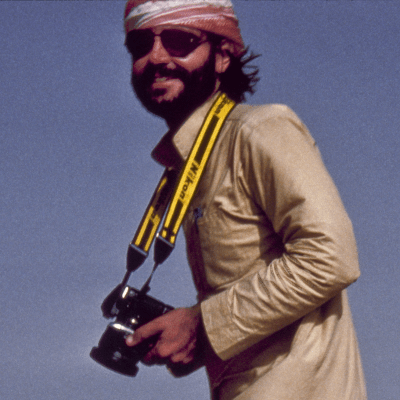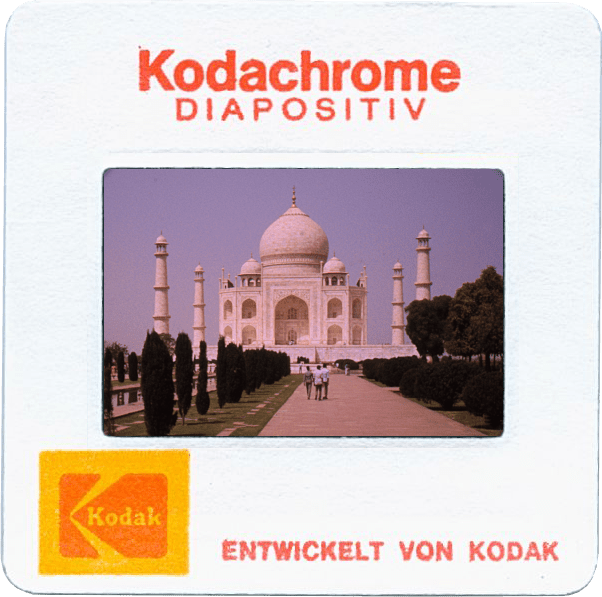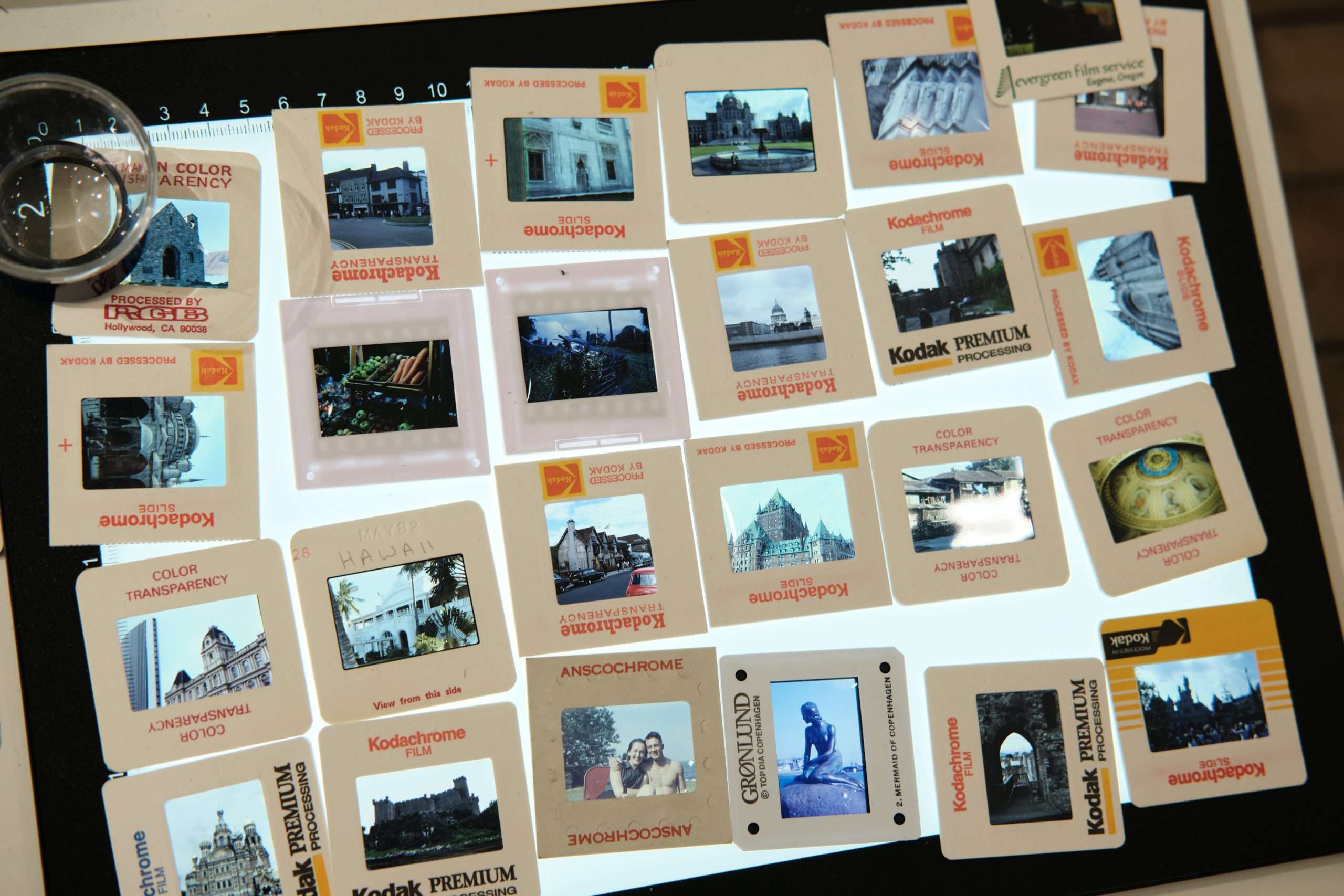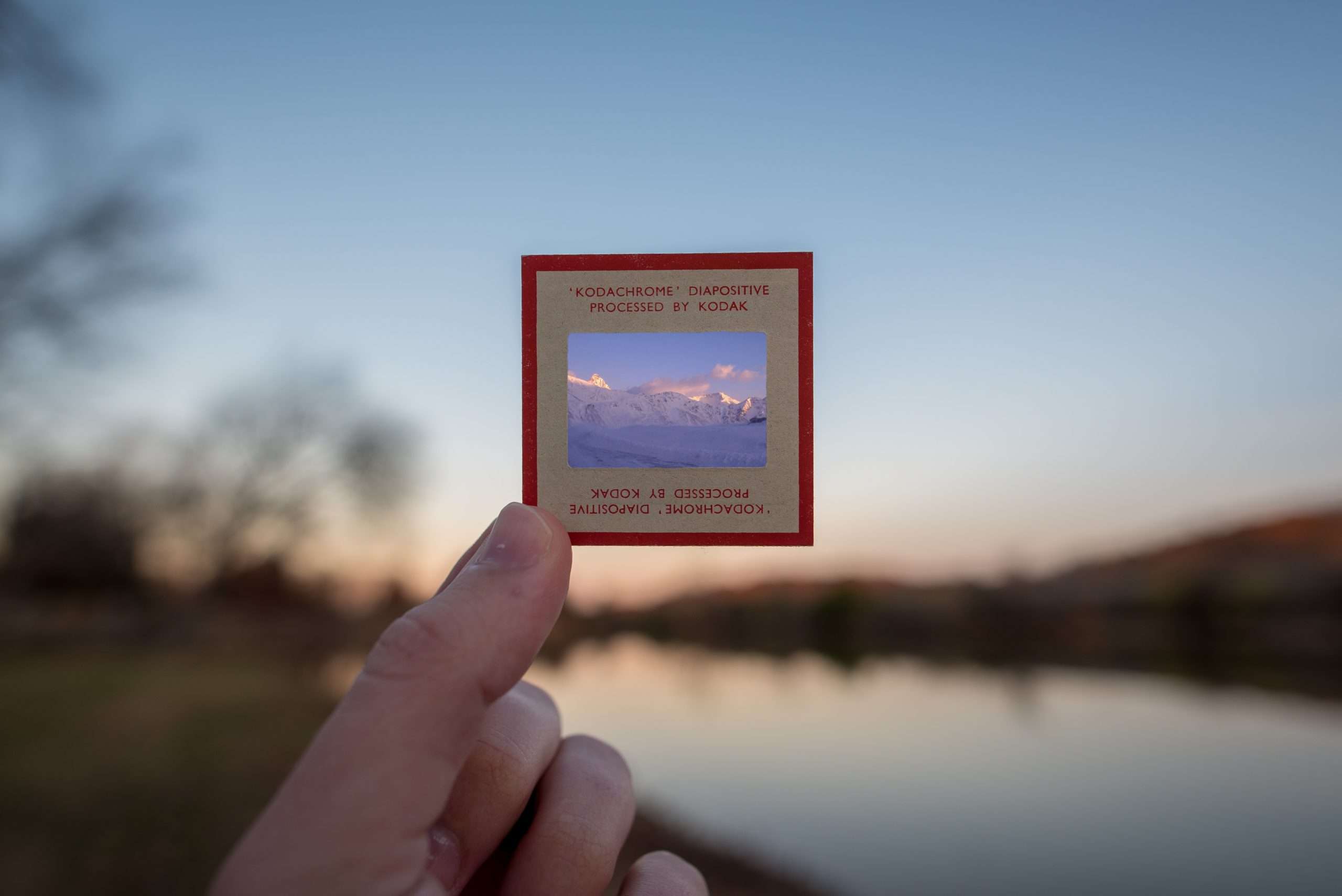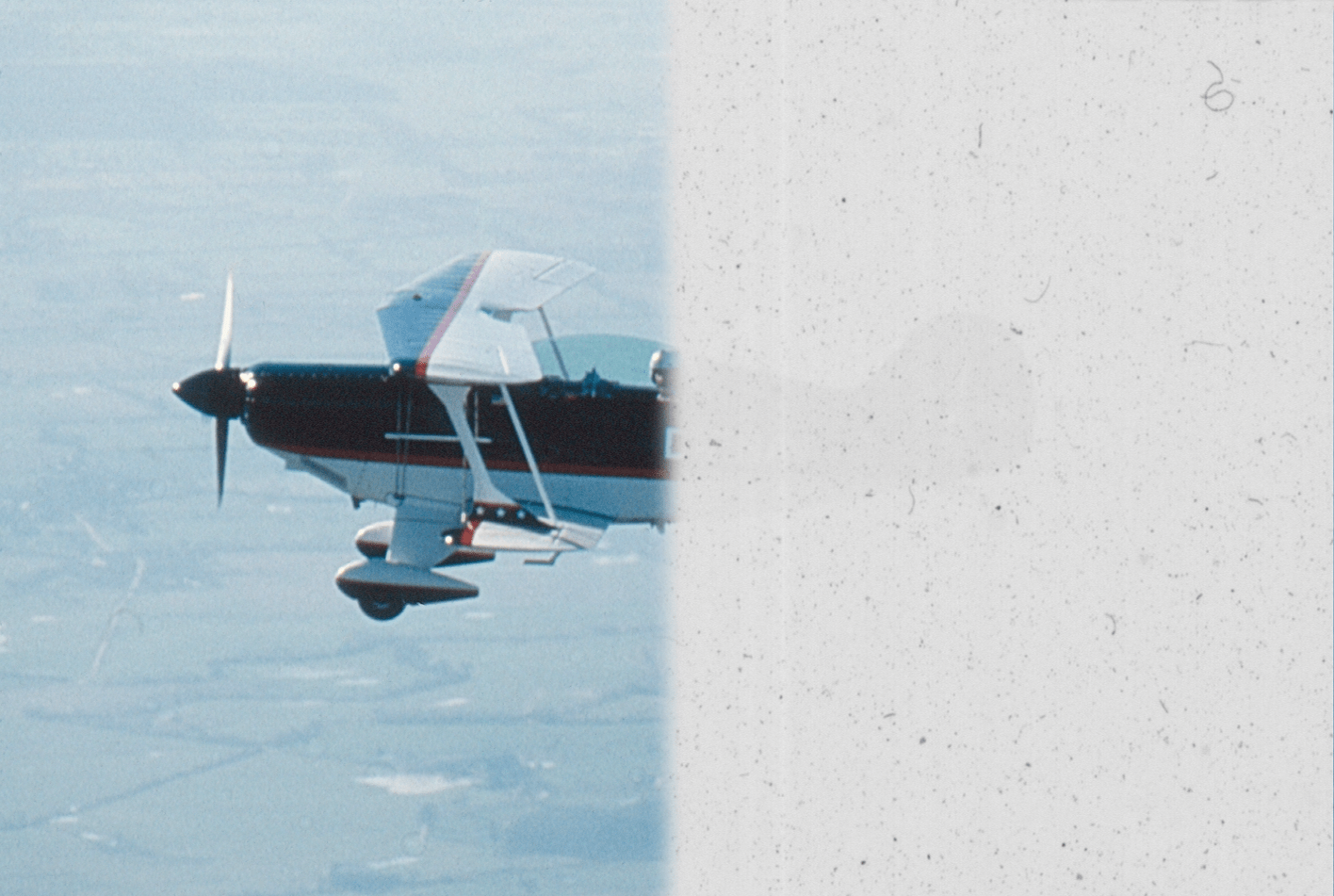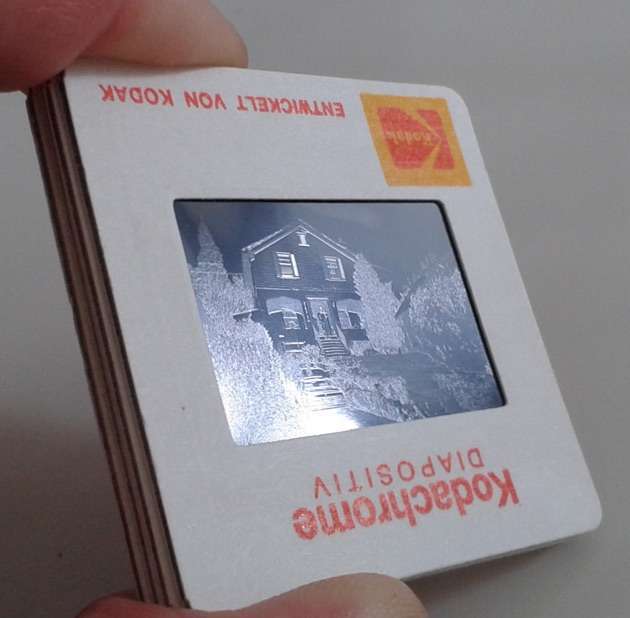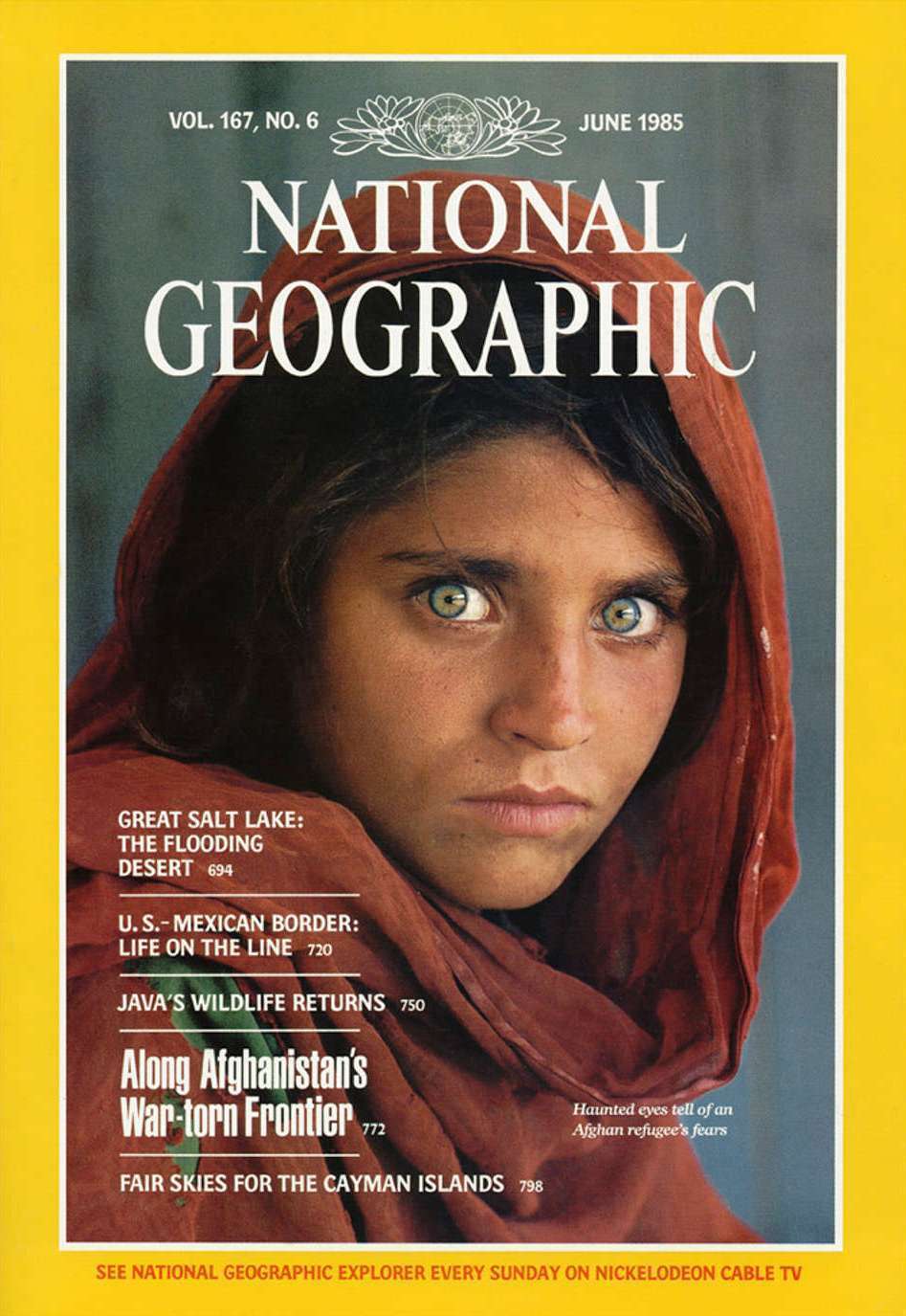What makes Kodachrome so special?
Technically speaking, a Kodachrome film varies from other E6-Positive-slide film due to its construction and special film development process. The film’s design is similar to black-white film. However, what makes Kodachrome so special are its three layers. Due to an K-14 development process, each layer contains one of the three basic colors. Unlike other Slide-Positive films, the dye couplers of Kodachrome film are first present during film development. Due to the film’s complex development process, the development of Kodachrome film was personally carried out by Kodak. When exposed to light, it is possible to see the large amount of silver halide-baryta present in the film itself. To the untrained eye, the Kodachrome film may appear as a negative. Moreover, Kodachrome slides are usually easy to recognize because of their typical cardboard mounts. In Europe, it was common for the development costs to be included in the purchase price. Unfortunately, this wonderful film-type requires some additional attention during digitalization. But more about that later…
Due to their high level of sharpness, Kodachrome images are wonderfully suited for enlargement – A feature sure to please many photographers in these times of affordable large format printing. Color reproduction with very fine skin tone gradation as well as the use of strong green tones allow Kodachrome images to appear vivid even years after development.
Over 85 Years of Kodachrome Images
Kodachrome’s success story began to come to an end in 2009 with Kodak’s discontinuance of film production; this was followed by 2010’s discontinuation of film development. This was the end because only Kodak could perform the K-14 development process. Needless to say, the images live on. Millions of slides lie in private and public archives waiting to be discovered.
Photographic film deteriorates with time; the chemicals necessary for development continue to react with one another. The first Kodachromes are already 85 years old and have aged accordingly even though Kodachrome film itself belongs to the most robust film types if stored correctly. How old does a Kodachrome have to be before we take it upon ourselves to digitalize it and share it with photo enthusiasts around the world.
The Wilhelm Imaging Research Institute extensively studied the longevity of different film-types under various conditions. The study concluded that even under optimal storage conditions, Kodachrome film will lose a significant amount of image quality within 95 years. Take a look for yourself how long your own particular film-type is predicted to last: Wilhelm Research – Permanence of Film (Excerpt from: The Permanence and Care of Analog and Digital Color Photographs, By Henry Wilhelm, Carol Brower Wilhelm, Kabenla Armah, and Barbara C. Stahl, ©2011 and ©2013 Wilhelm Imaging Research, Inc. Grinnell, Iowa, U.S.A.)
When film is exposed to light of any kind, its durability is adversely affected. Already a short amount of time exposed to light, negatively affects an image:
Critical projection time of Kodachromes
Accelerated deterioration due to film projection (Excerpt from: The Permanence and Care of Analog and Digital Color Photographs, By Henry Wilhelm, Carol Brower Wilhelm, Kabenla Armah, and Barbara C. Stahl, ©2011 and ©2013 Wilhelm Imaging Research, Inc. Grinnell, Iowa, U.S.A.)
With every day that you wait, your Kodachromes lose quality irreversibly…
